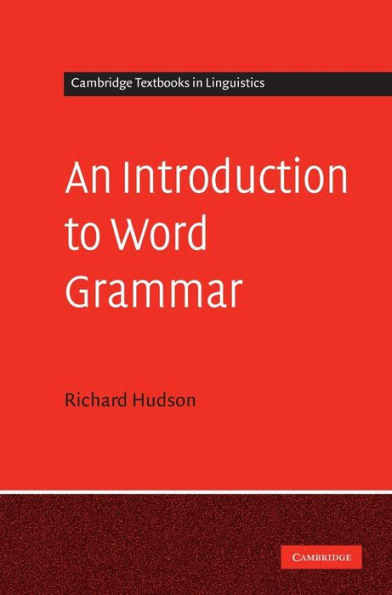An Introduction to Word Grammar
Word grammar is a theory of language structure and is based on the assumption that language, and indeed the whole of knowledge, is a network, and that virtually all of knowledge is learned. It combines the psychological insights of cognitive linguistics with the rigour of more formal theories. This textbook spans a broad range of topics from prototypes, activation and default inheritance to the details of syntactic, morphological and semantic structure. It introduces elementary ideas from cognitive science and uses them to explain the structure of language including a survey of English grammar.
1100954013
An Introduction to Word Grammar
Word grammar is a theory of language structure and is based on the assumption that language, and indeed the whole of knowledge, is a network, and that virtually all of knowledge is learned. It combines the psychological insights of cognitive linguistics with the rigour of more formal theories. This textbook spans a broad range of topics from prototypes, activation and default inheritance to the details of syntactic, morphological and semantic structure. It introduces elementary ideas from cognitive science and uses them to explain the structure of language including a survey of English grammar.
133.0
In Stock
5
1

An Introduction to Word Grammar
348
An Introduction to Word Grammar
348
133.0
In Stock

Product Details
| ISBN-13: | 9780521896900 |
|---|---|
| Publisher: | Cambridge University Press |
| Publication date: | 07/29/2010 |
| Series: | Cambridge Textbooks in Linguistics |
| Pages: | 348 |
| Product dimensions: | 6.70(w) x 9.80(h) x 0.80(d) |
About the Author
From the B&N Reads Blog
